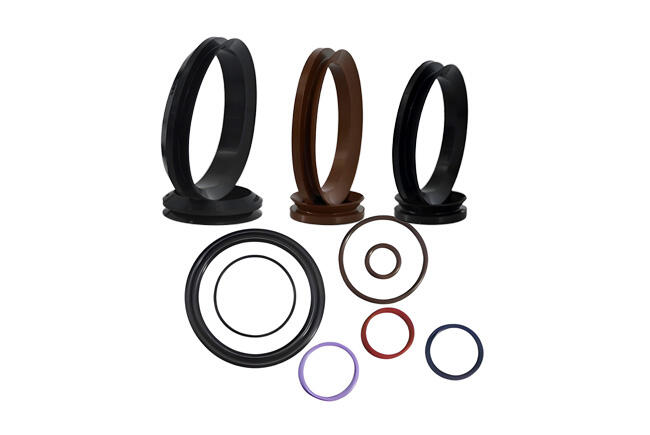In water treatment facilities, seals are often small components performing enormous tasks. Whether used in pumps, valves, mixers, or filtration systems, sealing elements ensure that fluids remain contained and contaminants stay out. When a seal fails, the system can experience leakage, corrosion, or unexpected downtime—all of which increase maintenance costs and impact long-term efficiency. Selecting the right seal for a water treatment environment therefore requires more than simply choosing a standard O-ring from a catalog.
Understanding the Environment
One of the most common misconceptions in seal selection is assuming that all water-based systems have similar requirements. In practice, treated water, raw water, seawater, and chemical-infused wastewater can vary dramatically in pH, temperature, and chemical composition. Each variation affects how a seal behaves under stress.
For instance, EPDM (Ethylene Propylene Diene Monomer) rubber remains a reliable choice for chlorinated or ozone-rich environments due to its strong resistance to oxidation and steam. NBR (Nitrile Rubber), on the other hand, performs well in applications with minimal chemical exposure but moderate oil contamination—such as pump shafts in industrial cooling systems. When the temperature rises or when the water contains aggressive cleaning agents, FKM (Fluorocarbon Rubber) offers long-term stability, especially in high-pressure membrane filtration systems.
The takeaway for buyers and maintenance engineers is clear: no single material fits all applications. The choice must be based on the specific fluid chemistry, pressure range, and maintenance intervals.
VA and VS Ring Seals
In addition to O-rings and traditional oil seals, VA/VS ring seals are increasingly adopted in modern water treatment systems. Though they may appear similar, their functions differ significantly:
VA ring seals are primarily used for dust and splash protection. Their compact lip design prevents external particles and moisture from entering the system, making them ideal for shaft ends exposed to humid or splashing water environments.
VS ring seals are designed to handle moderate axial pressure. They provide an additional layer of sealing in rotary or reciprocating systems, reducing leakage risks under fluctuating pressures.
For example, centrifugal and submersible pumps often employ VA rings to protect bearing housings, while VS rings are preferred in pressurized membrane modules or backwash pumps where stability under vibration is crucial. Using both in combination can significantly extend equipment life and reduce unplanned service downtime.

Pressure, Tolerance, and Installation
Water treatment systems can operate across a wide range of pressures—from below 1 MPa in general circulation pumps to over 6 MPa in high-pressure reverse osmosis systems. The seal must not only withstand this pressure but also maintain elastic recovery after compression.
When selecting a seal, pay attention to its compression set rating, hardness (commonly between 70 ± 5 Shore A), and installation clearance. A seal that fits too tightly may tear during assembly, while a loose fit can cause early leakage. Proper installation practices, including surface finishing and lubrication, also play a major role in extending seal life.
What Distributors and OEM Buyers Should Consider
From a distributor or OEM buyer’s perspective, seal supply is not just about technical parameters. Reliability in delivery, product diversity, and technical support are equally valuable. Many water treatment manufacturers operate on strict project timelines, downtime caused by a missing O-ring or VA ring seal can delay an entire plant start-up.
Therefore, working with suppliers that offer broad inventory coverage and rapid response to urgent needs is critical. A reliable sealing partner should also provide on-site support, helping customers adjust designs or materials based on real-world data rather than theoretical calculations.
How NQKSF Supports the Water Treatment Industry
With over three decades of sealing experience, NQKSF has developed solutions tailored to the specific challenges of water treatment systems. The company integrates design expertise, material knowledge, and manufacturing capability to deliver seals that perform reliably across diverse applications.
Standard parts ready for fast delivery – With an extensive catalog of O-rings, oil seals, VA rings, and VS rings, NQKSF maintains large inventories to support urgent project needs.
Customized service throughout the process – From material selection and structure design to prototype testing, every non-standard seal is engineered to match the exact working condition of the client’s system.
Technical empowerment for sealing systems – Backed by 30+ years of field experience, the company helps optimize sealing performance, minimize downtime, and reduce overall maintenance costs.
As an independent manufacturing facility and recognized leader in the sealing industry, NQKSF serves customers in more than 80 countries worldwide. The company holds certifications as a High-Tech Enterprise, Provincial Specialized and Innovative Enterprise, and operates a Provincial Technology Innovation Center. Within China’s industrial seal sector, NQKSF has become one of the leading enterprises in specialized industrial clusters, earning its reputation for precision, reliability, and technical consistency.
Sealing technology in water treatment continues to evolve. As systems operate under higher pressures and involve more chemically aggressive media, seal design will increasingly depend on material science and advanced testing. The collaboration between manufacturers and technical partners like NQKSF will play a central role in helping engineers find the right balance between performance, cost, and sustainability.
In essence, the “perfect” seal doesn’t exist, it is engineered. By understanding each system’s fluid characteristics, mechanical loads, and operational cycles, the right sealing solution can be created to ensure both reliability and efficiency for years to come.
 Hot News
Hot News